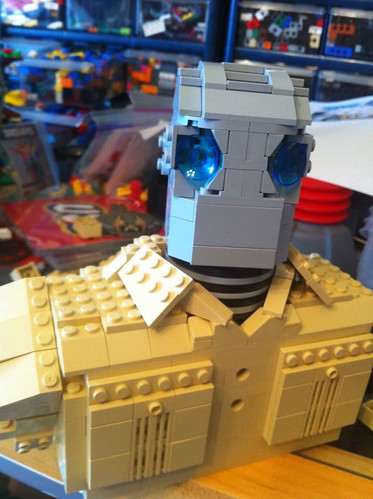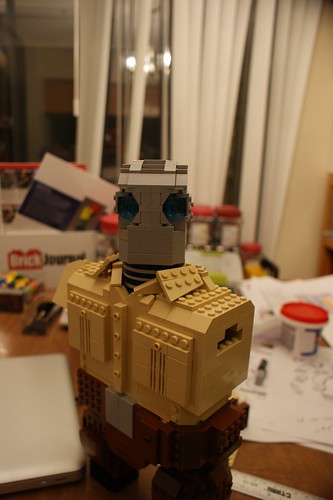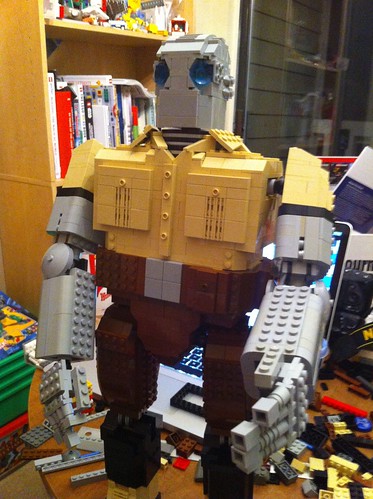Since I ran into the realization above, I started thinking about other ways of displaying a MOC. Anyone who has gone to an event knows that seeing a model online is nothing compared to seeing a model for real. This is why I tend to spend my time looking at models at displays instead of online. Like sculpture, a MOC has to be experienced from all sides. This is a challenge to those who cannot bring a MOC for various reasons, and also to the fans who cannot go to events for one reason or another. How can a person display without MOCs?
It's a bit easier now with the arrival of smartphones and iPads. Digitally built MOCs can now be displayed with LDraw readers on tablets or phones. I use BrickPad on my iPad and iPhone. I have become more interested in digital display for a few reasons:
1. There is no lack of display space.
2. You can view from any viewpoint, including minifigure point of view.
3. You can manipulate the model and examine construction - BrickPad can display construction steps, and has been updated to do more.
There's a lot of potential here. Not only can a viewer see a model, he can move it, rotate it, even deconstruct it, which cannot be done at displays. This allows full interactivity with a model to see internal workings and tour a model from a minifig point of view.
This is a render of a file I built in Bricksmith.
Another angle. You can switch angles by finger swipes in BrickPad, so you can rotate the pahser in virtual space.
This allows a flexibility that didn't exist before. With virtual models, people can touch and break apart a MOC.
You can get BrickPad free at iTunes here. I have a couple of MOCs in the library and plan to add more. My goal is to have a digital portfolio of my better MOCs to show at events. Other builders can showcase parts that people can't usually see, like an interior of a building.
And thank Kenrick Drew for making the app!
















